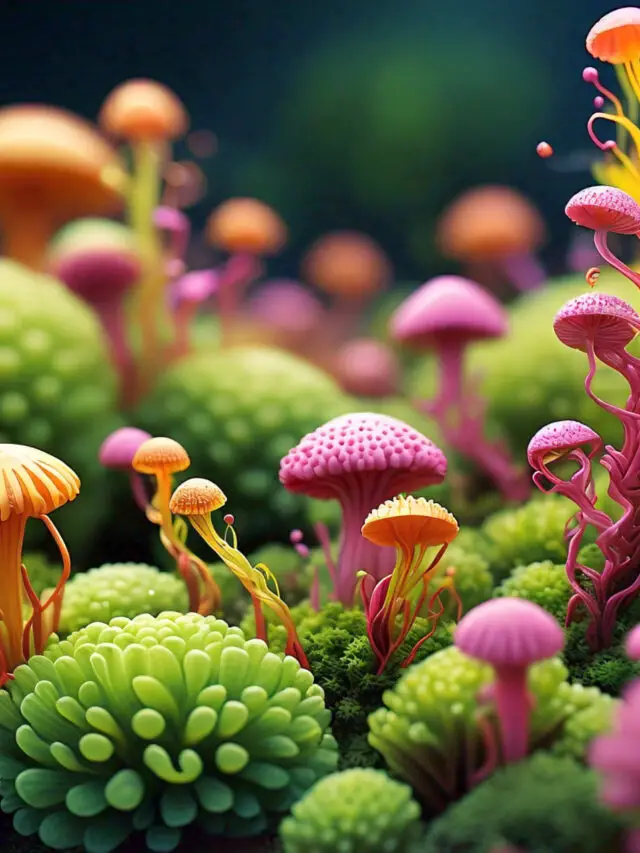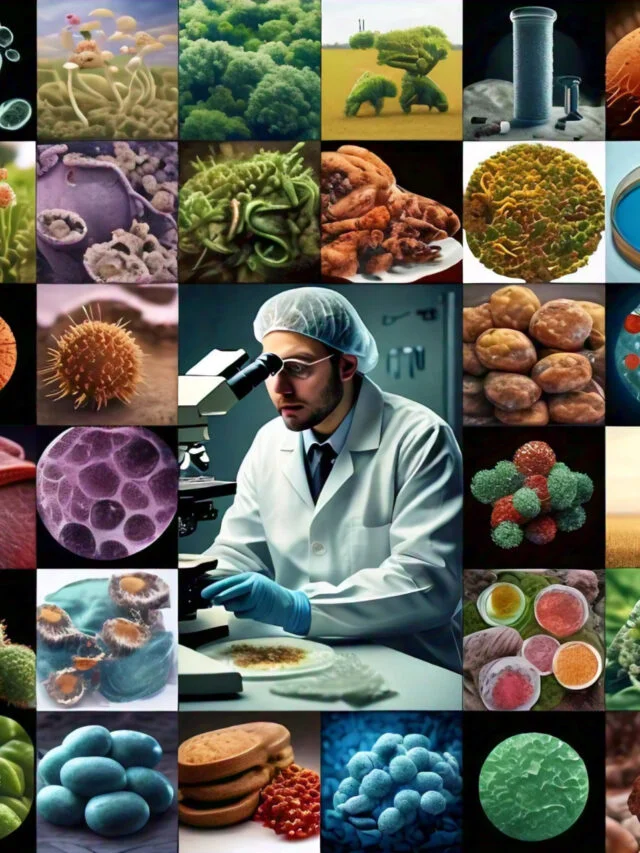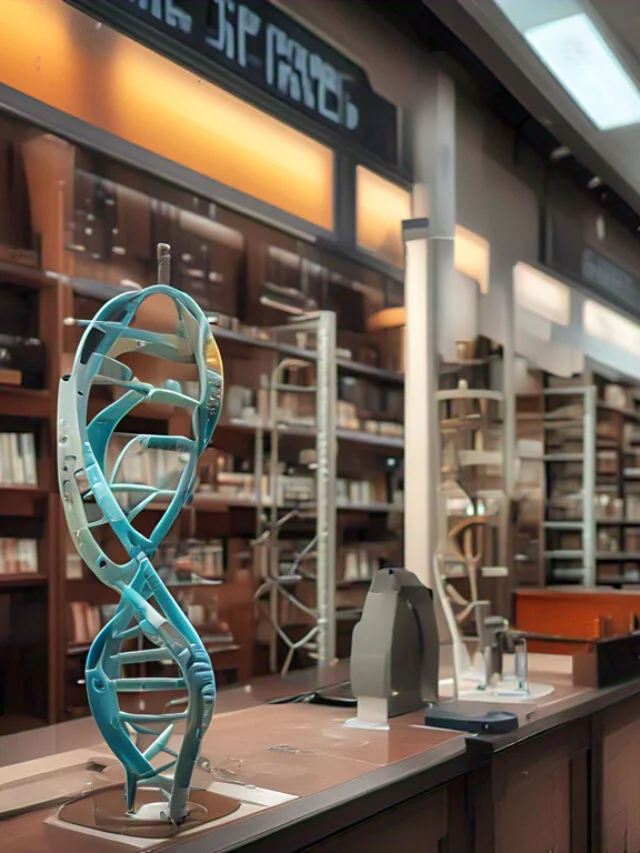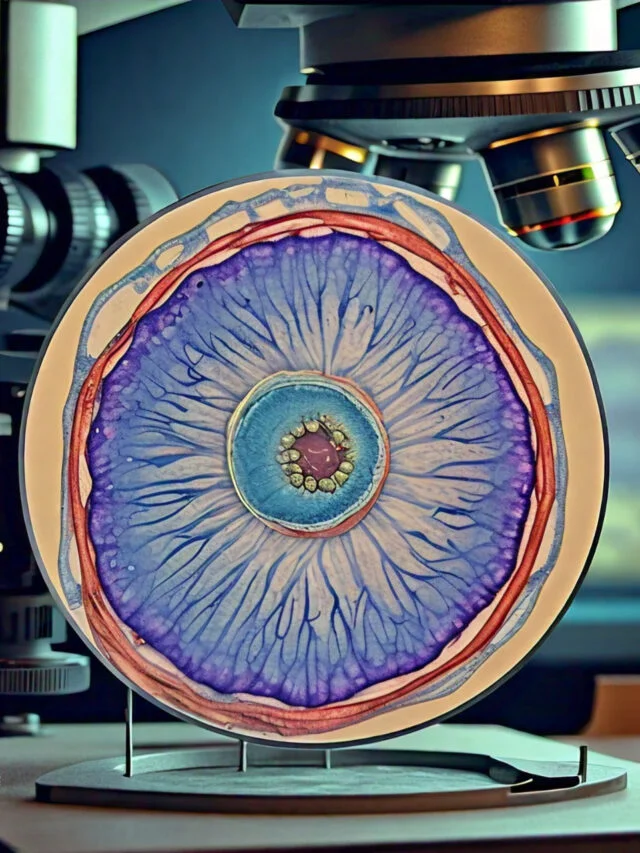Contents
What is a Zygote?
A zygote is a crucial concept in biology, representing the very first stage of a new organism’s development following the fertilization event. The term “zygote” (pronounced /ˈzaɪˌɡoʊt/) originates from the Ancient Greek word ζυγωτός (zygōtós), meaning ‘joined’ or ‘yoked,’ derived from ζυγοῦν (zygoun), which means ‘to join’ or ‘to yoke’. This name aptly describes the union of two gametes to form a single eukaryotic cell.
- A zygote forms when two haploid cells, known as gametes, fuse during fertilization. These gametes typically contain half the number of chromosomes found in somatic cells, which ensures that the zygote restores the diploid state, carrying two sets of chromosomes—one from each parent. This fusion process, known as karyogamy, results in a cell that holds the complete genetic blueprint necessary for the development of a new individual organism.
- The formation of zygotes in animals was first extensively studied in the late 19th century by German zoologists Oscar and Richard Hertwig. Their pioneering work laid the foundation for our understanding of how zygotes contribute to the complex processes of development and heredity.
- In single-celled organisms, the zygote itself becomes a fully functioning organism, capable of undergoing mitosis to produce offspring. For multicellular organisms, the zygote marks the beginning of a complex developmental journey. After fertilization, the zygote undergoes numerous rounds of cell division, or mitosis, leading to the formation of a multicellular organism. The length of this developmental period can vary significantly among species. For example, African elephants have a gestation period exceeding 20 months, while some rodents may give birth in as little as two weeks.
- To maintain genetic stability, gametes are produced through a process called meiosis, which reduces the chromosome number by half, ensuring that each gamete is haploid. When these gametes fuse to form a zygote, the diploid chromosome number is restored. This precise control of chromosome number is crucial for normal development. Deviations from the normal chromosome number can lead to conditions such as Down Syndrome in humans, which is characterized by an extra copy of chromosome 21.
- In plants, the concept of polyploidy—having more than two sets of chromosomes—is more common and often not detrimental. Many plants can accumulate additional sets of chromosomes over generations, sometimes leading to beneficial traits such as increased size or sterility of fruits, which can be commercially advantageous. Despite these differences, the fundamental process of zygote formation through the fusion of gametes remains consistent across the plant kingdom. In flowering plants, for example, the zygote forms when pollen fertilizes an egg within the ovule.
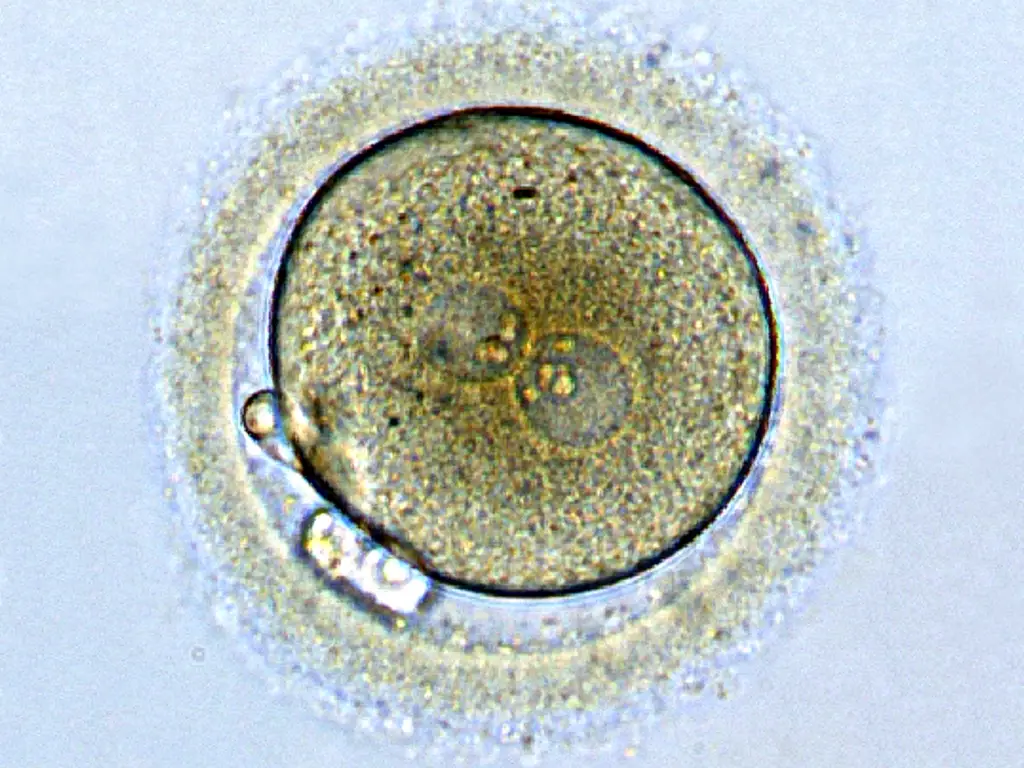
Definition of Zygote
A zygote is a eukaryotic cell formed by the fusion of two haploid gametes during fertilization, containing the complete set of genetic information necessary for the development of a new organism.

Examples of Zygote
Understanding zygotes and their formation is essential to grasp the initial stages of development in various organisms. Below, we explore examples of zygote formation across different species, highlighting their unique processes and characteristics.
1. Canine Zygotes
Process of Formation:
- In dogs, gametes (sperm and eggs) are produced through meiosis, reducing their chromosome number by half.
- During mating, the male dog’s sperm travels to the female’s eggs in her fallopian tubes.
- Fertilization occurs when a sperm cell fuses with an egg cell, creating a single cell called a zygote.
- The zygote undergoes mitotic divisions and eventually develops into a litter of puppies, each of which continues to grow and develop after birth.
Key Points:
- Zygote formation begins in the fallopian tubes.
- Mitosis leads to the development of a multicellular organism.
- Puppies are born and continue to develop externally.
2. Fern Zygotes
Process of Formation:
- Ferns exhibit a life cycle called alternation of generations, involving both diploid sporophytes and haploid gametophytes.
- The diploid sporophyte produces haploid spores via meiosis.
- These spores grow into gametophytes, which produce gametes (sperm and eggs).
- Fertilization occurs when these gametes fuse, forming a zygote.
- The zygote develops into a new diploid sporophyte, completing the cycle.
Key Points:
- Alternation of generations involves both diploid and haploid stages.
- Gametophytes produce gametes, which fuse to form zygotes.
- Zygotes develop into sporophytes.
3. Human Zygotes
Process of Formation:
- In humans, zygotes form when a sperm cell fertilizes an egg cell in the fallopian tube.
- This fusion results in a zygote with a diploid set of chromosomes.
- The zygote undergoes multiple mitotic divisions, eventually forming an embryo.
Key Points:
- Zygote formation occurs in the fallopian tube.
- Mitotic divisions lead to embryo development.
- Human zygotes are central to studies in embryology and genetics.
4. Fungal Zygotes (Zygospores)
Process of Formation:
- In fungi, the haploid mycelium develops into gametes.
- These gametes undergo karyogamy, fusing to form a diploid zygote called a zygospore.
- The zygospore can remain dormant until conditions are favorable for growth.
Key Points:
- Zygospores form through the fusion of haploid gametes.
- They can survive in a dormant state until conditions improve.
- Zygospores ensure the survival and reproduction of fungi.
5. Plant Zygotes
Process of Formation:
- In plants, zygotes form inside a structure called an archegonium, following the fusion of male and female gametes.
- This process can involve diploid or polyploidy zygotes, depending on the species and reproductive mechanisms.
Key Points:
- Zygotes develop within the archegonium.
- Plant zygotes can be diploid or polyploid.
- Polyploidy can lead to advantageous traits in plants.
6. General Animal Zygotes
Process of Formation:
- In animals, zygote formation is a universal first stage of life.
- Internal fertilization occurs within the female’s body, typically in the fallopian tube.
- External fertilization occurs outside the body in species such as fish and amphibians.
Key Points:
- Zygote formation is the initial stage of life for all animals.
- Fertilization can be internal or external.
- Diploid zygotes develop through mitosis into multicellular organisms.
Understanding these examples illustrates the diverse mechanisms through which zygotes form and develop in different species, reflecting the fundamental role of zygotes in the continuation of life.
Formation of Zygote
Zygote formation is a fundamental process in sexual reproduction, marking the beginning of a new organism. This process, known as fertilization, involves the fusion of male and female gametes. Below, we delve into the key steps of zygote formation, highlighting its mechanisms in both humans and plants.
Key Steps in Zygote Formation
- Gamete Formation
- Gametogenesis: This is the process by which organisms produce gametes.
- Spermatogenesis: In males, this process results in the production of sperm.
- Oogenesis: In females, this process generates ova (egg cells).
- Gametogenesis: This is the process by which organisms produce gametes.
- Fertilization
- Gamete Fusion: During fertilization, a sperm cell penetrates the protective layers of the ovum and enters its cytoplasm. The nuclei of the sperm and ovum then fuse, combining their genetic material.
- Formation of Diploid Zygote: The fusion of the sperm and egg nuclei results in the formation of a zygote, which is diploid (having two complete sets of chromosomes, one from each parent).
- Zygote Division
- Cleavage: After fertilization, the zygote undergoes a series of rapid cell divisions known as cleavage. These divisions lead to the formation of a multicellular structure called a blastocyst, which eventually develops into an embryo.

Formation of Human Zygote
In humans, zygote formation occurs internally within the female reproductive system, specifically in the fallopian tube.
Steps of Human Zygote Formation:
- Sperm Ejaculation: During sexual intercourse, millions of sperm are ejaculated, but only a few hundred reach the ovum in the fallopian tube.
- Penetration of Corona Radiata: Multiple sperm can penetrate this outer layer of the ovum.
- Penetration of Zona Pellucida: Only one sperm successfully penetrates this inner layer, undergoing a process called sperm capacitation.
- Formation of Fertilization Cone: When a sperm contacts the plasma membrane of the ovum, a fertilization cone forms, allowing the sperm to enter.
- Formation of Pronuclei: Once inside the ovum, the sperm loses its tail and forms the male pronucleus. The male and female pronuclei then fuse, combining their chromosomes to form a diploid cell, the zygote.
Key Points:
- Internal Fertilization: The zygote forms within the female’s body.
- Fusion of Pronuclei: The male and female pronuclei merge to create the diploid zygote.
- Cell Division: The zygote begins to divide, leading to embryo development.
Formation of Plant Zygote
In plants, zygote formation occurs through a process called double fertilization, which involves the fusion of gametes within the ovary.
Steps of Plant Zygote Formation:
- Pollination: Pollen grains are deposited on the stigma and germinate, forming pollen tubes.
- Migration of Pollen Tubes: The pollen tubes grow through the stigma and style toward the ovary.
- Formation of Gametes: Inside the pollen tube, two male gametes are formed.
- Fertilization: When the pollen tube reaches the ovary, it releases the male gametes into the embryo sac.
- One male gamete fuses with the egg nucleus to form a diploid zygote (2n).
- The other male gamete fuses with two polar nuclei to form a triploid nucleus (3n), which will develop into the endosperm.
Key Points:
- Double Fertilization: Involves the formation of both a zygote and endosperm.
- Zygote Formation: The fusion of a male gamete with the egg nucleus produces a diploid zygote.
- Endosperm Formation: The fusion of the second male gamete with the polar nuclei forms the triploid endosperm, which provides nourishment to the developing embryo.
Development Process of Zygote
The development of a zygote is a complex and highly regulated process that transforms a single cell into a multicellular organism. This process involves several stages, each critical for proper embryonic development. Below is a detailed overview of the key stages in the development of a zygote.
1. Cleavage
- Rapid Cell Division: Within the first 12-24 hours after fertilization, the zygote undergoes rapid mitotic divisions called cleavage.
- Formation of Morula: These divisions result in a solid ball of cells known as the morula, which remains the same size as the original zygote due to the intact zona pellucida that regulates its growth.
2. Blastulation
- Blastocyst Formation: The morula continues to divide and eventually forms a hollow structure called the blastocyst.
- Differentiation: Cells within the blastocyst begin to differentiate into two layers:
- Trophoblast: The outer layer that will develop into structures that support implantation in the uterus.
- Inner Cell Mass: The inner layer containing pluripotent cells that can differentiate into various body tissues.
3. Gastrulation
- Formation of Germ Layers: During the third week, the cells differentiate into three primary germ layers:
- Ectoderm: Forms the epidermis, hair, nails, brain, and spinal cord.
- Mesoderm: Develops into muscles, connective tissue, bones, gonads, kidneys, and the circulatory system.
- Endoderm: Creates the epithelial lining of the digestive tract and other internal organs.
4. Formation of Primitive Streak and Notochord
- Primitive Streak: This structure forms on the surface of the early embryo, marking the beginning of gastrulation.
- Notochord Formation: The notochord, a rod-like structure, forms along the axis of the embryo and serves as a scaffold for the developing nervous system.
5. Neurulation
- Neural Plate Formation: The notochord induces the overlying ectoderm to form the neural plate.
- Neural Tube Formation: The neural plate folds to form the neural tube, which will develop into the central nervous system (brain and spinal cord).
- Neural Crest Cells: Cells at the edge of the neural plate form the neural crest, which gives rise to the peripheral nervous system and other structures.
6. Mesoderm Differentiation
- Division of Mesoderm: The mesoderm divides into:
- Axial Mesoderm: Forms structures such as the notochord.
- Paraxial Mesoderm: Develops into somites, which give rise to the vertebrae and skeletal muscles.
- Intermediate Mesoderm: Contributes to the formation of the urogenital system.
- Lateral Plate Mesoderm: Forms the heart, blood vessels, and body cavity linings.
7. Organogenesis
- Formation of Organs: The differentiated cells from the germ layers continue to proliferate and specialize, forming the various organs and tissues of the body.
- Heart Development: By the eighth week, the heart has been beating for almost five weeks, and all major organs begin to take shape.
Summary of Key Stages
- Cleavage: Rapid mitotic division forming the morula.
- Blastulation: Formation of the blastocyst with differentiation into trophoblast and inner cell mass.
- Gastrulation: Formation of the three germ layers: ectoderm, mesoderm, and endoderm.
- Primitive Streak and Notochord: Formation and organization of the embryonic axis.
- Neurulation: Development of the neural tube and neural crest.
- Mesoderm Differentiation: Specialization of mesoderm into various tissues.
- Organogenesis: Formation and maturation of organs.
Mitotic division of the Zygote
Mitotic division of the zygote is a crucial process in early embryonic development, leading to the formation of a multicellular organism from a single fertilized egg. This process involves a series of well-coordinated steps, each contributing to the complex development of the embryo. Below is a detailed explanation of the key stages involved in the mitotic division of a zygote.
1. Formation of Zygote
- Definition: A zygote is a single diploid cell formed by the fusion of a sperm and an egg during fertilization.
- Genetic Composition: It contains a complete set of chromosomes inherited from both parents, combining genetic material from each.
2. Cleavage
- Rapid Cell Division: The zygote undergoes rapid mitotic divisions, a process known as cleavage, without significant growth in cell size.
- Result: This stage results in an increase in cell number, but the overall size of the structure remains the same due to the presence of the zona pellucida, a protective layer that restricts growth.
3. Formation of Morula
- Morula Stage: After several rounds of cleavage, the zygote forms a solid ball of cells known as the morula.
- Blastomeres: The individual cells within the morula are called blastomeres. These cells are identical and totipotent, meaning they have the potential to develop into any cell type.
4. Blastocyst Formation
- Blastulation: The morula undergoes further division and differentiation to form a hollow, fluid-filled structure called the blastocyst.
- Structure: The blastocyst consists of:
- Trophoblast: The outer layer of cells that will eventually form part of the placenta.
- Inner Cell Mass: A group of cells inside the blastocyst that will develop into the embryo.
5. Implantation
- Movement to Uterus: The blastocyst moves towards the uterus, where it undergoes implantation.
- Attachment: The blastocyst attaches to the uterine wall, marking the beginning of pregnancy.
6. Gastrulation
- Gastrulation Stage: Following implantation, the blastocyst enters the gastrulation stage.
- Formation of Germ Layers: During gastrulation, the blastocyst develops three primary germ layers:
- Ectoderm: The outermost layer, which will form the epidermis, nervous system, and sensory organs.
- Mesoderm: The middle layer, which gives rise to muscles, bones, the circulatory system, and other internal structures.
- Endoderm: The innermost layer, which will form the lining of the digestive and respiratory systems.
7. Organogenesis
- Differentiation of Germ Layers: The cells in the ectoderm, mesoderm, and endoderm continue to differentiate and specialize.
- Formation of Organs and Structures: This stage, known as organogenesis, involves the development of specific organs and structures from the three germ layers.
- Embryonic Development: Organogenesis leads to the formation of a functional embryo, with all the primary organs and systems beginning to take shape.
| Stage | Description |
|---|---|
| Formation of Zygote | – A single diploid cell formed by the fusion of sperm and egg during fertilization. <br> – Contains a complete set of chromosomes from both parents. |
| Cleavage | – Rapid mitotic cell division without significant growth. <br> – Increases cell number while maintaining the same overall size due to the zona pellucida. |
| Formation of Morula | – After cleavage, the zygote becomes a solid ball of cells known as the morula. <br> – Cells within the morula are called blastomeres. |
| Blastocyst Formation | – The morula forms a hollow, fluid-filled structure called the blastocyst. <br> – Consists of the trophoblast (outer layer) and inner cell mass. |
| Implantation | – The blastocyst moves to the uterus and attaches to the uterine wall. <br> – Marks the beginning of pregnancy. |
| Gastrulation | – The blastocyst develops three primary germ layers: <br> – Ectoderm: Forms the epidermis, nervous system, and sensory organs. <br> – Mesoderm: Forms muscles, bones, circulatory system, and internal structures. <br> – Endoderm: Forms the lining of the digestive and respiratory systems. |
| Organogenesis | – The germ layers differentiate and form specific organs and structures. <br> – Leads to the development of a functional embryo. |
Difference Between Zygote and Embryo
Zygote:
- Definition: A zygote is a single diploid cell resulting from the fusion of two haploid gametes—one from the male (sperm) and one from the female (egg). This fusion process is known as fertilization.
- Formation: The formation of the zygote is the initial step of fertilization, marking the combination of genetic material from both parents.
- Cellularity: The zygote is unicellular, meaning it consists of only one cell.
- Size and Structure: Zygotes are relatively small and simple in structure, without differentiated body parts or dermal layers.
- Location: In humans and many animals, zygotes are typically formed and found in the fallopian tube.
- Size Stability: The size of the zygote does not change significantly immediately after its formation.
Embryo:
- Definition: An embryo is the early developmental stage of a multicellular organism that follows the zygote stage and precedes the fetal stage. It arises through the process of embryogenesis.
- Formation: Embryos are formed from the mitotic division and differentiation of the zygote, involving complex developmental processes.
- Cellularity: Embryos are multicellular, consisting of many cells that start to specialize and form tissues and organs.
- Developmental Process: During embryogenesis, the embryo undergoes significant growth and differentiation. Three primary germ layers—ectoderm, mesoderm, and endoderm—form, giving rise to various tissues and organs.
- Location: In humans and most animals, embryos are formed in the uterus, where they implant and continue to develop.
- Size Change: Embryos increase in size as they develop, differentiating into more complex structures.
| Aspect | Zygote | Embryo |
|---|---|---|
| Definition | A single diploid cell formed by the fusion of male and female gametes during sexual reproduction. | The early developmental stage of a multicellular organism, following the zygote stage and preceding the fetal stage. |
| Cellularity | Unicellular | Multicellular |
| Formation | Formed through the fusion of gametes. | Formed from the mitotic division of the zygote. |
| Size | Usually small. | Larger in size compared to the zygote. |
| Stage | The initial step of fertilization. | A later stage that marks the beginning of cellular differentiation. |
| Development Process | The process of formation is called fertilization. | The process of formation is called embryogenesis. |
| Body Parts/Dermal Layers | No body parts or dermal layers are separated. | Dermal layers are separated, and several organs and body parts begin to form. |
| Location in Humans and Most Animals | Formed and found in the fallopian tube. | Formed and found in the uterus as an implanted stage. |
| Size Change | Does not change its size. | Increases in size as it begins to develop. |
Significance of Zygote in Reproduction
The zygote is a pivotal element in the process of reproduction, serving as the starting point for the development of a new organism. Its significance lies in several key aspects:
- Initiation of New Life Cycles:
- The zygote is formed through the fusion of a sperm cell and an egg cell, marking the beginning of a new life cycle.
- This fusion, known as fertilization, is the first step in the formation of a new individual.
- Genetic Diversity:
- The zygote contains genetic material from both parents, contributing to genetic diversity within a population.
- This genetic diversity is essential for the adaptation and evolution of species.
- Embryonic Development:
- The zygote undergoes multiple rounds of cell division and differentiation to form the embryo.
- This process transforms the single-celled zygote into a multicellular structure with specialized cells and tissues.
- Genetic Instructions:
- The zygote carries a complete set of genetic instructions, known as the genome, from both parents.
- These genetic instructions are essential for directing the development of the new organism.
Key Facts about Zygote
- Definition: A zygote is the initial cell formed when two gamete cells (sperm and egg) fuse during fertilization, resulting in a single diploid cell.
- Genetic Material: It contains a full set of chromosomes, half from the mother and half from the father, providing the genetic blueprint for the new organism.
- Formation: Zygotes are formed in the fallopian tube of female mammals and undergo rapid mitotic cell division.
- Uniqueness: Each zygote is genetically unique, as it combines genetic material from two different individuals.
- Embryonic Development: The zygote undergoes cleavage, forming a multicellular structure called a blastocyst, which implants into the uterus and further develops into an embryo.
- Ploidy: Zygotes are diploid, containing two sets of chromosomes, one set from each parent.
- Role in Reproduction: Zygotes are crucial in sexual reproduction, as they are the starting point of the development of a new organism.
- Genetic Diversity: Zygotes contribute to genetic diversity within a species, as the combination of genetic material from two individuals creates unique offspring.
- Potential: Zygotes have the potential to develop into a fully formed organism through the process of embryogenesis.
- Ethical Considerations: Zygotes are a subject of ethical debate, particularly in the context of assisted reproductive technologies and stem cell research.
MCQ on Zygote
What is a zygote?
a) A multicellular structure
b) A single diploid cell
c) A specialized tissue
d) A type of gamete
How is a zygote formed?
a) Through meiosis
b) Through mitosis
c) Through fertilization
d) Through differentiation
What is the ploidy of a zygote?
a) Haploid
b) Diploid
c) Triploid
d) Tetraploid
When does a zygote undergo cleavage?
a) Before fertilization
b) After fertilization
c) During fertilization
d) None of the above
What is the primary function of a zygote?
a) To divide into gametes
b) To form an embryo
c) To carry genetic material
d) To undergo meiosis
Where does fertilization and zygote formation typically occur in humans?
a) Uterus
b) Ovary
c) Fallopian tube
d) Cervix
How many chromosomes does a human zygote have?
a) 23
b) 46
c) 69
d) 92
What is the first stage of development after fertilization?
a) Blastocyst
b) Morula
c) Zygote
d) Embryo
What process converts a zygote into a blastocyst?
a) Mitosis
b) Meiosis
c) Cleavage
d) Differentiation
What is the zygote’s role in sexual reproduction?
a) To produce gametes
b) To fuse with the uterine wall
c) To initiate embryonic development
d) To form the placenta
FAQ
What is a zygote?
A zygote is a single diploid cell formed by the fusion of a sperm cell and an egg cell during fertilization. It contains a complete set of chromosomes, with genetic material from both parents.
Which is a homologous chromosome pair?
A homologous chromosome pair consists of two chromosomes—one from the mother and one from the father—that are similar in size and carry genes for the same traits. A tetrad, on the other hand, consists of two homologous chromosomes paired with their duplicated copies (chromatids) after DNA replication, which occurs during the cell division process.
Which structure fuses to form a diploid zygote during sexual reproduction?
During sexual reproduction, a sperm cell from the male fuses with an egg cell from the female to form a diploid zygote. This process, known as fertilization, results in the combination of genetic material from both parents.
An elephant has 56 chromosomes. Which statement about a zygote of an elephant is true?
A zygote of an elephant would have 56 chromosomes, as it inherits a complete set of chromosomes from each parent (the male and female elephant).
How many cells does a zygote consist of?
A zygote consists of a single cell, formed by the fusion of a sperm cell and an egg cell during fertilization.
When does a zygote become an embryo?
A zygote becomes an embryo after undergoing several rounds of cell division and differentiation, leading to the formation of a multicellular structure with specialized cells and tissues.
What process occurs as a zygote becomes a blastocyst?
As a zygote becomes a blastocyst, it undergoes further cell division and differentiation, forming a hollow ball of cells with an outer layer (trophoblast) and an inner cell mass.
How many chromosomes does a diploid human zygote have?
A diploid human zygote has 46 chromosomes, with 23 chromosomes inherited from each parent.
What is the difference between a zygote and an embryo?
A zygote is a single-cell stage following fertilization, while an embryo is a multicellular stage that develops from the zygote and precedes the fetus stage in the development of a new organism.
How is a zygote formed?
A zygote is formed through the fusion of a sperm cell and an egg cell during fertilization, resulting in a single diploid cell with genetic material from both parents.
References
- https://www.geeksforgeeks.org/what-is-zygote/
- https://byjus.com/biology/zygote/
- https://biologydictionary.net/zygote/
- https://www.vedantu.com/biology/zygote
- https://www.biologyonline.com/dictionary/zygote
- https://www.genomicseducation.hee.nhs.uk/glossary/zygote/
- https://testbook.com/biology/zygote
- https://www.britannica.com/science/zygote#:~:text=zygote%2C%20fertilized%20egg%20cell%20that,becomes%20subdivided%20into%20smaller%20cells.
- https://www.sciencedirect.com/topics/earth-and-planetary-sciences/zygote

